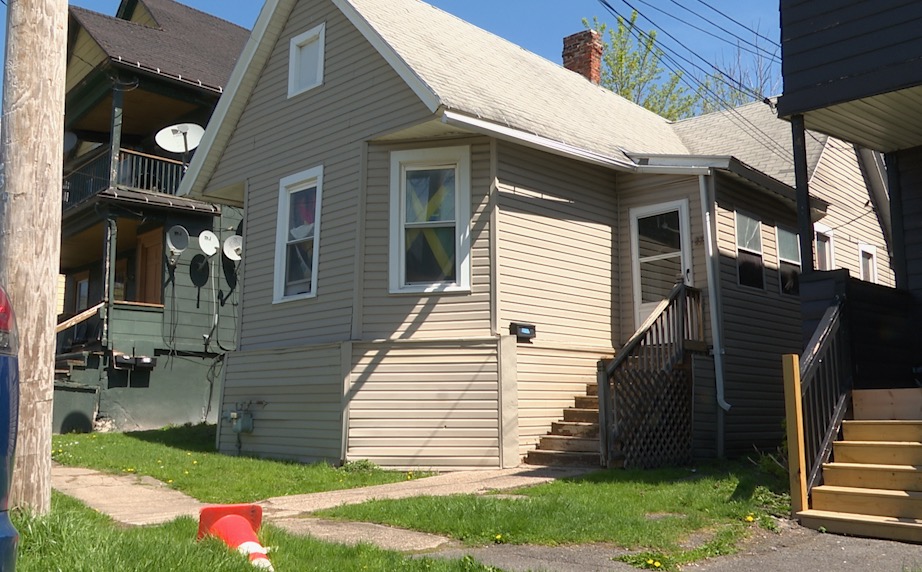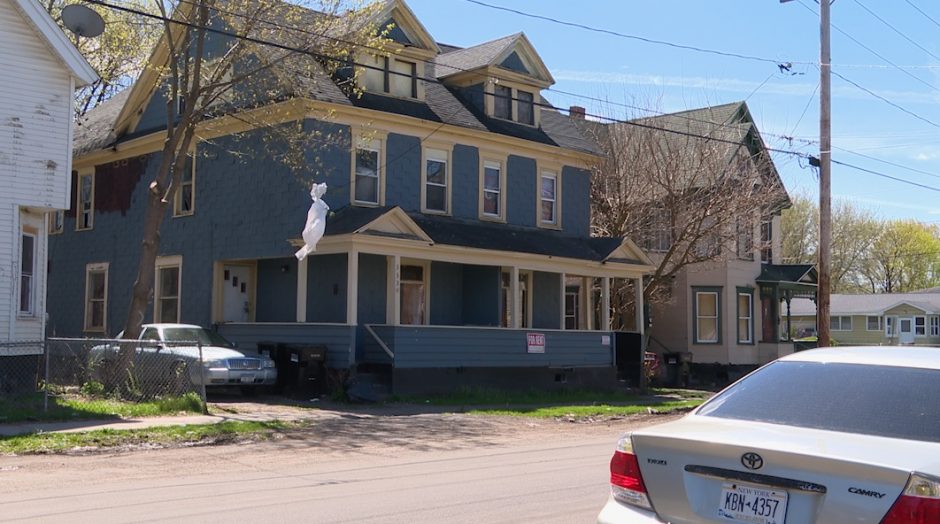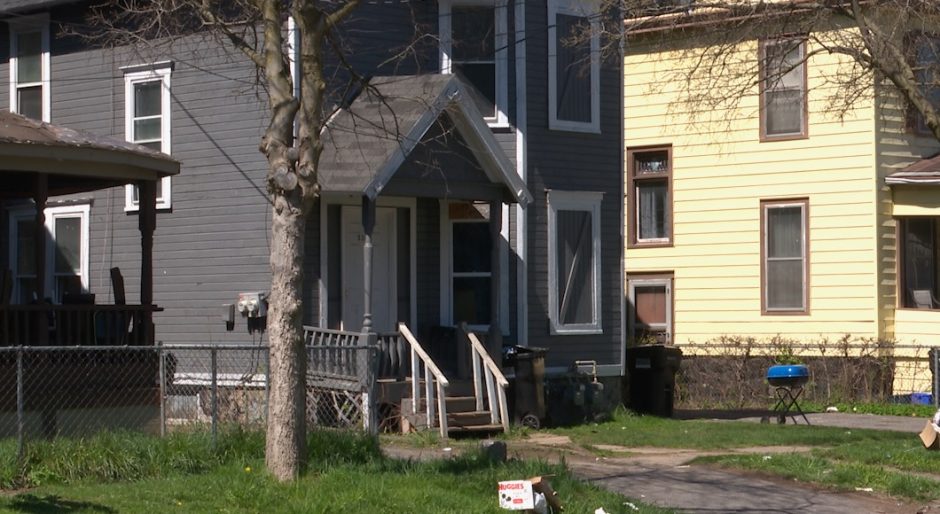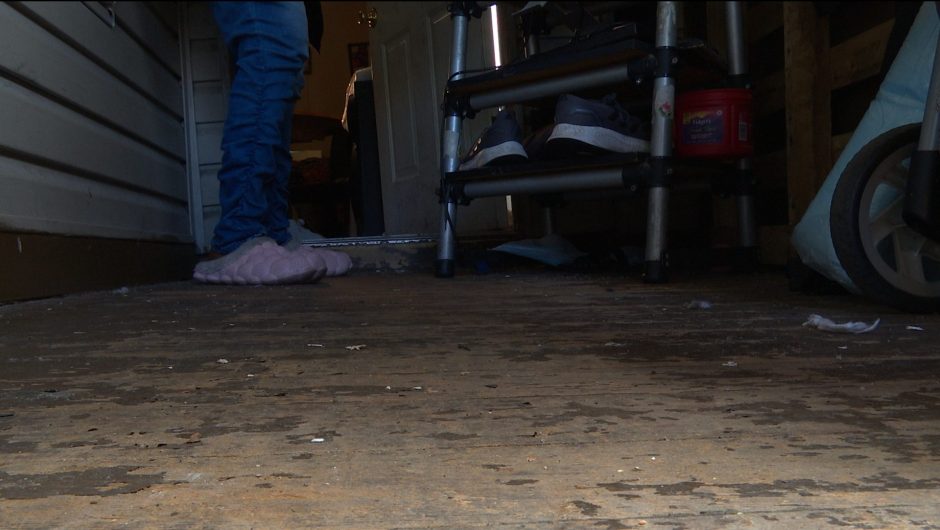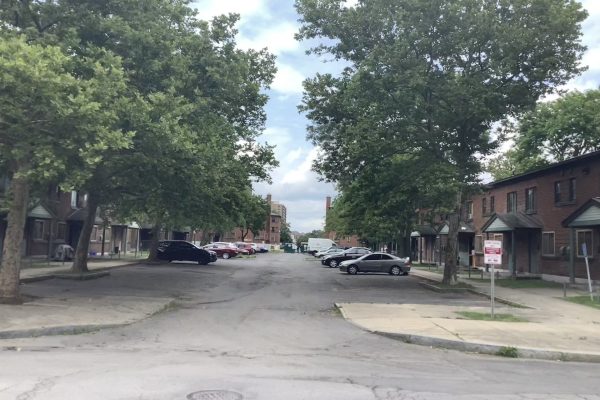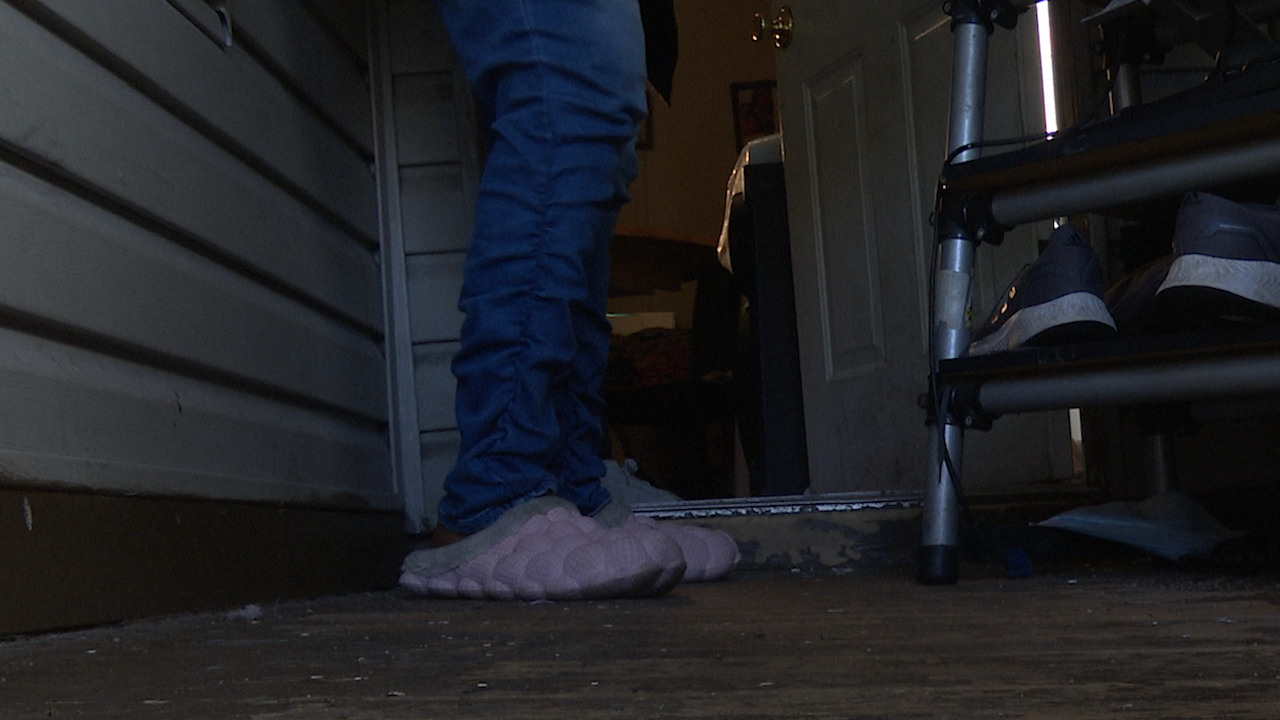
Written by Finn Lincoln with Lilli Iannella, John Perik and Julie Gilchrist
SYRACUSE, N.Y. (NCC News) – Her hallway had tested to have over triple the legal limit of lead dust by the CDC’s newly proposed standards. The front porch where her children play? More than seven times what is considered legally safe. But when Carla Mason, a lifelong Syracuse resident, approached her landlord with concerns about the living situation of her children, he issued what some may see as a verbal slap in the face.
“You can’t do anything. You don’t have enough money for a lawyer,” is what Mason alleges he told her.
Now living in Tiffin, Ohio, Carla Mason blames lead infestation, high prices and abusive landlords for driving her out of her hometown. She’s not the only one. The city of Syracuse is currently battling a decades-long war against childhood lead poisoning. Capitalizing on these vulnerable, low-income families such as Carla Mason’s are a multitude of alleged shoddy landlords, now widely referred to as ‘Syracuse’s slum-lords’ by the communities they have impacted.
Almost every single activist, victim and expert cited in this story agreed on one thing: Onondaga County and the city of Syracuse are not doing enough with the resources they have to combat this issue.
PART ONE: Chipped Away
The Impact of Lead Poisoning on a Child
After four years, with two young children living in Section 8 housing, Carla Mason, like many low-income Syracuse residents, faced a severe lack of options. Section 8 housing is a federally funded program that helps low-income families pay rent.
All the residences Carla Mason looked at either were too expensive or contaminated with lead, she said, so she decided to stick it out until she could find a better option. Unfortunately, this day never came.
It was during this period that her two children were poisoned by lead, with her youngest son, Khaleel, bearing the brunt of the weight. With blood lead levels reaching as high as 22 mcg/dL, Khaleel Mason registered a mark that is over six times what the CDC considers ‘elevated.’ Elevated levels are when the poisoning gets particularly dangerous.
However, according to activists such as Kiara Van Brackle, a clinical neuroscientist and health policy activist at the Maxwell School of Citizenship and Public Affairs at Syracuse University, there is no safe or acceptable lead level that should be tolerated in a child’s blood.
According to Van Brackle, there are a plethora of reasons why lead poisoning causes great harm to children. She specifically cited effects on the frontal lobe of the brain, which affects decision making and fine motor skills. Lead poisoning can also lead to issues with ADHD and aggressive behaviors down the line. There are also other negative effects on the cardiovascular system, kidneys and GI system.
Carla Mason noticed many of Van Brackle’s listed symptoms in her son. At six years old, Carla Mason still has to tell Khaleel “every day how to put his clothes on. Every day, I had to show him how to put his shoes on.”
Carla Mason is not alone in this battle. In buying up large chunks of low-income housing in the most impoverished areas of the city, these landlords’ inaction, according to activists, could be responsible for hundreds of child lead poisonings.
Learn more about the History of this Issue in an Audio Report by Julie Gilchrist
Rachel Howell is another Syracuse tenant who has had relatives suffer detrimental lead poisoning. Howell lives with three of her grandchildren in a lead-contaminated home. She cites mental delays in two of her grandchildren to their elevated blood-lead levels, which she believes have been picked up through the lead paint used throughout the house.
Furthermore, Howell said her landlord consistently refuses to do anything to substantially aid in removing lead contamination in the house. Howell’s property manager, Tom Voumard, is an associate of the major real estate firm, Howard-Hanna.
“He don’t like to take care of his property,” Howell noted. She also described how the minimal efforts that her landlord has made is to provide her with low quality paint that quickly begins peel and deteriorate.
The Spotlight Team attempted to call Voumard on multiple occasions but never received any response.
Recent court cases involving some of Syracuse’s most infamous ‘slum lords’ have shed more light on this issue, but according to experts like Van Brackle, this barely puts a dent in the overall problem.
Winning Some Battles
In February 2024, William D’Angelo and his company, Marpat, LLC, were among the first ‘slum lord’ organizations to face real repercussions. After a drawn-out case that started in July 2023, the court charged D’Angelo with “repeatedly and persistently violating lead safety laws at nearly two dozen rental properties.”
According to the court documents from D’Angelo’s case, this violation of safety laws is not just one he has been allegedly perpetuating for up to 30 years. The documents note that D’Angelo’s crimes don’t just stand on a local level, as he “has repeatedly and persistently violated County, City, State, and federal laws by failing to maintain the D’Angelo Properties in a lead-safe condition.”
The court’s final determination made on D’Angelo’s involvement in childhood lead poisoning was that “during the past seven-and-a-half years, 15 children have been poisoned by lead while residing in a D’Angelo Property.”
The Spotlight Team attempted to reach out to D’Angelo, both through his phone provided on court documents, and by visiting the accompanying address. We never got any response.
Not long after D’Angelo’s case began, Todd Hobbs of TLH Holdings and Properties received similar charges.
According to court documents, in the last seven years, over 19 Hobbs properties have been cited by County Health and/or the City of Syracuse Division of Code Enforcement. The total number of violations noted across these homes is well over 400. Furthermore, the court has cited these Hobbs properties as directly responsible for poisoning at least 11 children with lead.
The Spotlight Team also attempted to speak to Hobbs over the phone but never heard back on our voice messages.
Court documents note that D’Angelo and Hobbs both settled their court cases by paying $230,000 and $175,000 respectively, as well as $5,000 to each family with a child afflicted by the issue.
When asked how much $5,000 can help a child with lead poisoning, Van Brackle couldn’t help but laugh.
“How much is your brain worth? How much is your future worth? My brain is certainly not worth [under] $5,000,” said Van Brackle. She added that $5,000 is the cost for the IV bag these children need for one day of the lead removal process called chelation. This process is expensive, painful, traumatizing, and can take months in severe cases.
In addition to this outcome, court documents also note that Hobbs and D’Angelo will both be able to continue owning and leasing out homes in the Syracuse area as long as they pay to fix up all of their current properties.
Darlene Medley is one of Syracuse’s key activists fighting the lead poisoning issue, working most closely with the Families for Lead Freedom Now organization. She feels this decision is underwhelming and doesn’t punish these landlords enough.
To further mitigate risks of reports from their tenants, many landlords, including Hobbs, allegedly resort to fear-mongering tactics to scare their tenants out of causing them trouble.
On multiple instances throughout this investigation, the Spotlight Team approached Hobbs’ tenants who were unwilling to comment or provide their names out of fear of reprisal.
Jocelyn Richards, an organizer for the Syracuse Tenants Union, says these practices are commonplace among the Syracuse ‘slum-lords,’ whom she works to combat. Richards cited incidents of landlords showing aggressive behaviors, entering homes without permission, or even posting fake eviction notices to intimidate tenants.
Furthermore, Richards and her team have been keeping close tabs on Mike Hemmer and InFisium Properties, another alleged slum-lord organization that Carla Mason claims was responsible for the mistreatment and poisoning of her children.
Unlike D’Angelo and Hobbs, Hemmer has not received any punishment for his actions.
We also attempted to call Hemmer using his CNY Realtor profile but have yet to hear a response.
Is it just the Slum-Lords to Blame?
Walter Eiland is an activist for the 100 Black Men of Syracuse organization and a current Syracuse landlord. Eiland takes immense pride in providing a safe environment for his tenants.
He explained, “I invested in property so that I can secure a future for my family, and with family in mind, I have to think about what families I’m putting into my properties.”
Instead of finding shortcuts and focusing only on the money, Eiland has shouldered the burden of the costs and efforts required to ensure his homes are lead-free. Eiland explained how taking the RRP Lead Paint Certification Course greatly informed him on the issue.
Eiland questioned why landlords aren’t required to take a course like this, explaining that the government may be more at fault than the landlords who receive the immediate blame.
According to the Onondaga County Lead Poisoning Prevention Initiatives, efforts and funds have been or will be allocated to train contractors and property managers using this RRP course. Other education and supervisory efforts have been made, which may help to address Eiland’s issue.
Eiland also noted how physically demanding, time-consuming, and expensive it can be to remove lead paint from a house. For this reason, he thinks most landlords need governmental help to remediate homes.
Richards has felt a lack of interest from the government in her conversations while representing the tenant’s union.
She described, “the difficult thing is, when we meet with them, they either act supportive, claim they’re doing all these great things to address the issues we bring up already […] Or they come up with kind of random reasons why our ideas won’t work. […] They just stall to our faces.”
According to the county budget, just over $11 million has been allocated in local funding to combat the issue since 2022. Further resources have come from the US Department of Housing and Urban Development. According to Justin Sayles, the executive communications director for Onondaga County, the money is being put to use every day. Despite multiple requests to disclose how many of these resources have been spent, Sayles didn’t provide a concrete number.
According to the Onondaga County Lead Poisoning Prevention Initiatives, these funds have gone towards remediating old homes, testing at-risk children and hiring health counselors and educators.
Sayles also noted how the county alone cannot be held at fault for this issue, but that the city and health departments will also need to be heavily involved if the problem is to be solved. The city specifically is where the housing stock has the largest issues with lead paint, and where the majority of the children are being poisoned.
The city even lost its lead poisoning prevention grant a few years ago, which hindered its ability to effectively fight the issue.
But are these efforts an example of too little, too late?
Having two children afflicted with lead poisoning, Medley understands the grave impacts that the government’s inaction can have. “One thing that has always stood out to me is the saying that once your child has been poisoned by lead, they will never live up to their full potential,” she said.
PART ONE: Chipped Away

